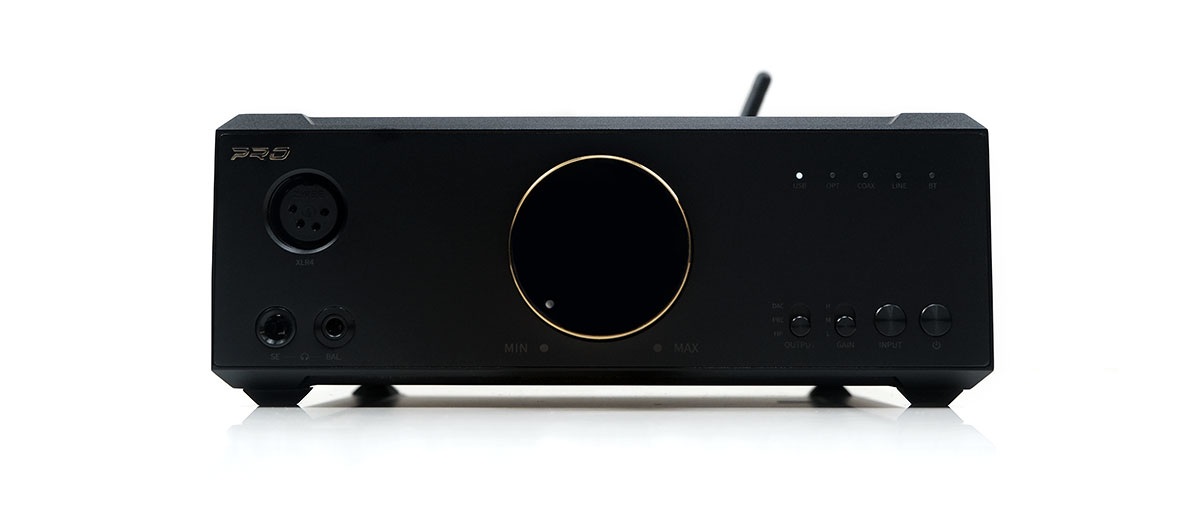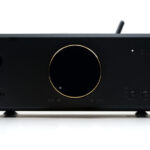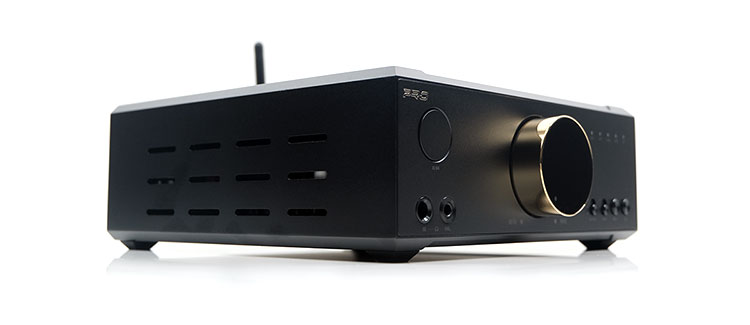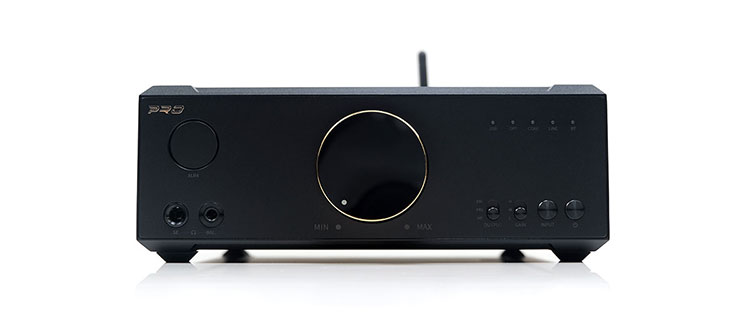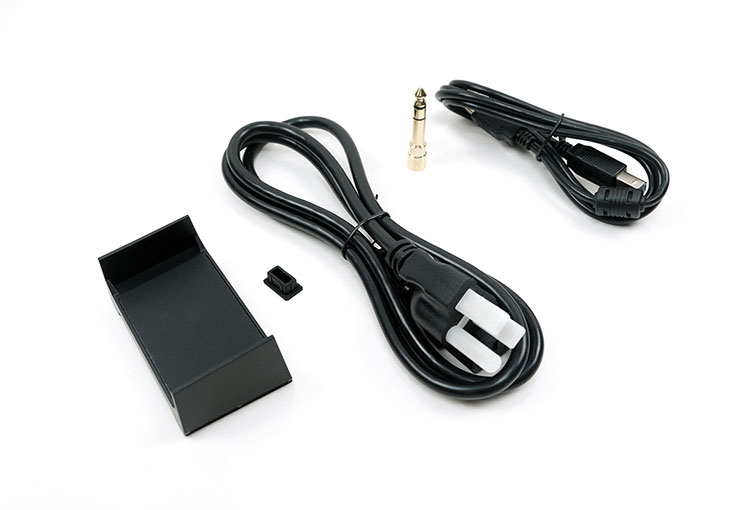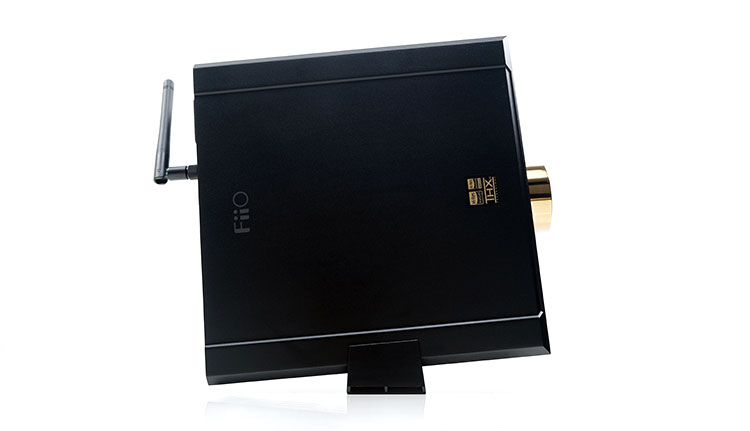Our review today features the FiiO K9 Pro ESS which is the Sabre version of the company’s flagship desktop integrated headphones amp and DAC. It is priced at $699.99.
Disclaimer: This was sent to us as a sample for our honest opinion. Headfonics is an independent website with no affiliate links or services We thank FiiO for this opportunity.
To learn more about FiiO products previously featured on Headfonics you can click here.
Note, this article follows our latest scoring guidelines which you can read up on here.
FiiO is not normally known for stuff like this. Granted the K5PRO and its various iterations have a desktop theme, but the K9 Pro ESS (and the older AKM version) is a whole new level of ‘larging it’ for the company.
This is desktop ‘everything’ for a reasonable price with an integrated balanced engineered headphone amplifier, a dual Sabre DAC implementation, Bluetooth, and line-out capability.
What piqued my interest, however, was the striking similarity of this integrated amp and DAC with some of what is under the hood of the flagship DAP, the M17. That includes the same DAC chipsets and the same THX amplifier. One has to wonder, if you can’t afford an M17 and you want to drive some headphones, is the K9 Pro ESS the next best thing?
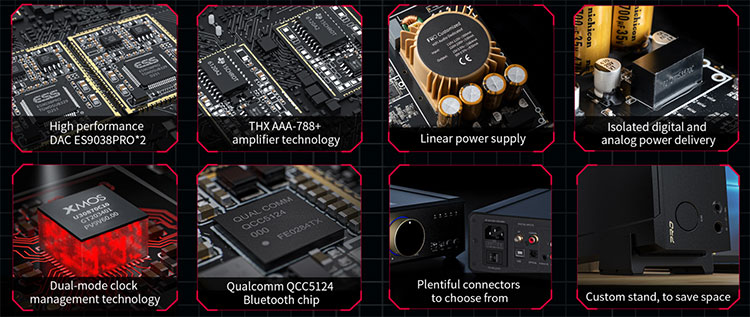
Tech Highlights
I guess you can call the K9 Pro ESS round two because we did have the AKM or AK4499EQ version which came out in limited quantities last year. That was always going to be a product with a finite supply given the problems AKM has had over the last year or two after the factory fire and discontinuing a lot of chipsets from the Velvet range.
However, it does seem that the K9 Pro ESS is not just the same “MK2” with a different chipset. There are some dimensional, weight, and venting adjustments on the physical side, not to mention the filtering and some improved cleaner output power on the electrical side.
DAC
We start with the DAC which is where the ESS name is derived from. Here FiiO has swapped out the original single AK4499EQ chipset with a dual-mono ES9038PRO implementation in current mode. This is the same chipset used inside their flagship M17 DAP and in the same dual-channel configuration also.
All 8 parallel outputs are active with a set of 8 TI OPA1612 opamps for I/V and a built-in linear PSU. You should get some improvements in SNR, (up to 129dB), and a lower THD+N (<0.0025%), as well as more subjective elements using balanced mode in terms of channel separation and lower noise floors.
The digital bridge inside the K9 Pro ESS is managed via an MQA capable XMOS XU-208 USB stage with a TI MSP432 microcontroller. There is no FPGA inside the K9 Pro ESS to the best of my knowledge. From there the data is reclocked via an overclocking High-Precision PLL Delay Matrix and dual independent Femtosecond clock system before being received by the DAC.
The decoding is also quite similar to the M17 and has no change from the original K9 Pro AKM version. That means you get up to DSD256 and PCM 32BIT/384kHz from its which might feel a bit behind the best out there which can do DSD512 and 768kHz such as the 2019-released DA10 from Yulong but it is similar to the M17 at a much higher price.
You also get MQA and no surprise for guessing it has the same 8X unfolding capability as the M17 and the previous K9 Pro. That means upsampling 48kHz containers will be a maximum of 384kHz.
Bluetooth
Yup, you get wireless inside the K9 Pro ESS also with the use of Qualcomm’s latest BGA BT5.1 capable QC5124 chipset with an external antenna for receiving, (no transmission). This is the same receiver as you will find in the M17 with a similar performance level also in terms of decoding.
Ideally, you will get SBC up to AAC and LDAC compatibility as well as FiiO having acquired the license for aptX, aptX HD, including aptX Adaptive. Pretty much every codec is included for decoding wireless signals inside the K9 Pro ESS.

Amplification
FiiO recently partnered with THX to develop an entirely new amplification opamp called the THX788+ which is an exclusive spin on their 788 chipsets used in desktop amplifiers. It was first premiered in their flagship M17 DAP and the original K9 Pro so you will also find the same dual chipset implementation inside the K9 Pro ESS.
However, it is not a like-for-like, at least not on paper. For one thing, FiiO has taken the opportunity to tweak the power rating slightly from the original K9 Pro by an additional 100mW going from 2W into a 32Ω load to 2.1W balanced.
Sticking with single-ended, the K9 Pro offers a fairly healthy 1.1W at the lowest load level, 16Ω, which only marginally drops to 1W at 32Ω, and then down to 281mW for 300Ω. The line-level output remains unchanged at a fairly healthy 3V for the dual SE RCA and 5.8V for the balanced XLR outputs.
The rest of the performance will come from the improved dual-channel Sabre DAC implementation with an increase of 4dB SNR and a reduction in THD+N from ≤ 0.0003% to ≤0.00025%.
Given how quiet the M17 performance is I am expecting the same from the K9 Pro ESS. However, I do have to note that the maximum power rating when going unbalanced is 0.4W lower than the M17’s DC-powered maximum and 900mW lower for the balanced equivalent.
Mind you, the M17 does not have the K9 Pro ESS’s internal linear PS and I do know some have reported good results with an external 12V linear PSU connected to the M17.
Design
Dimensions
The K9 Pro ESS is a surprisingly compact desktop unit measuring in at 200 x 224.5 x 72mm and much smaller than I thought it might be given my casual viewing from the web.
To give you a rough and ready comparison it’s not as deep as the Shanling EM5, even trimming a few mm off the depth of the Ferrum OOR which I find fairly compact, to begin with. It is also fairly narrow though not quite as narrow as the EM5. What is slightly more unusual is the height which is much taller than either of those two amps at 72mm and gives it a boxier appearance.
The materials used are solid enough with a mix of sandblasted CNC machined aluminum for the panels finished in a black that is not too shiny and not too matte. Screw joints are low-profile with the majority discreetly positioned on the rear panel. holding what seems to be a sliding top chassis and a base plate attached to the front panel.
Aesthetics
The design language is all FiiO 2022 with a mech styling though not as aggressive as the M17 or M11 DAPs. You get some solid clean lines from front to back on the top panel and something new for the ESS version of the K9 Pro, side panel venting.
You get 12 large airy side panel vents in a 3 x 4 configuration that was not there on the AKM version and I suspect that’s some quick feedback on the cooling process working there for this design iteration
The front panel is adorned by a huge smoothly finished centrally-positioned resistance-based potentiometer dial finished in a PVD gold coating and a thin circular LED light behind it which uses color sequences to indicate the current sampling rate for both wired and wireless connections.
The edging on the K9 Pro ESS chassis is quite smooth through the sides though the cornering is a shade sharper so watch your handling and keep it central and you should be fine.
You do get feet for the amp but they are not integrated into the housing. Inside the box, there is a strip of 3M-like wide base rubber feet that stick like limpets to the base of the K9 Pro ESS. Get them on right and they look fine to me though bear in mind that humidity and aircon over a long period of time could dry them out meaning they are prone to falling off.
I have but two criticisms of the otherwise very nicely designed housing. The first is the labeling, the print color is a little dull meaning under dim light it is hard to read. The second is the housing finish which attracts fingerprints like crazy. You will need a cloth to keep this one clean.
I/O
Power Settings
The K9 Pro ESS has I/O to the front and the rear but critically, when out of the box, the first one you want to pay attention to is the red voltage dip switch on the base of the unit. It comes with two settings, 11oV and 230V so pick whoever is right for your region, or else you could end up damaging the PSU with the wrong voltage settings.
By the way, in the accessories package, there is a small rubber cap which for a few seconds I was wondering why it wouldn’t fit on the USB port on the right panel. It’s actually for the dip switch port on the base panel. Once you get the right voltage setting, simply insert the rubber plug to cover it and then move on.
Digital & Analog
The K9 Pro ESS can operate as an all-in-one, a pre-amp, and has the appropriate I/O to bypass both the amplifier and the DAC depending on your preferences. That means each key area can operate independently from each other.
The unit comes equipped with the essential digital inputs to the rear including coaxial, USB (type B), and optical. All three are located around the screw terminal for the BT antennae. You also get an additional and very welcome OTG digital Audio compliant USB-C port on the right-side panel near the front of the unit.
Analog is a bit more unusual with the inclusion of a 4.4mm balanced line-in as well as two SE dual RCA and a balanced set of 3-pin XLRs. Note, one of the RCA sets is a line out as are the balanced XLR ports.
The 4.4mm port is a balanced line-in and will come in handy for those looking to connect their DAPs or other OTG capable sources as the main DAC to the K9 Pro ESS amplifier.
The front panel has a triple lineup of PO connections including a 4-pin XLR and 4.4mm output for balanced gear and a single 6.35mm for SE. When out of use FiiO has also supplied a little dust cover for the XLR port which keeps things tidy aesthetically speaking.
Controls
Physical
There is no LCD output on the K9 Pro ESS, everything is light and switch-based on the front panel to indicate status, input, and output. However, FiiO has supplied the means to have a measure of control over the K9 Pro ESS via their FiiO Control app.
On the front panel, you have output options, headphones, line out, or DAC. All three are fairly self-explanatory in terms of functionality. Beside it are 3 gain switches: low, medium, and high with what I presume to be a similar rising dB curve to the M17 starting at -6dB. Volume control is in the digital domain with FiiO’s long-standing ADC Curve reconstruction technology.
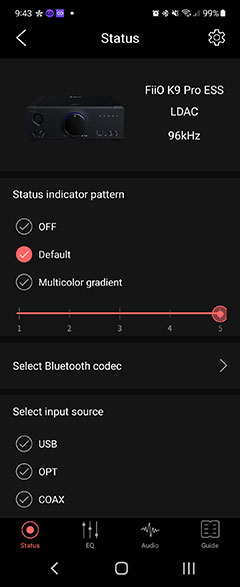

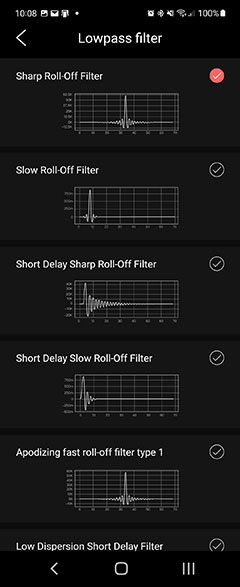
Digital
Although not exclusive to the K9 Pro ESS, the FiiO Control app covers everything you probably need for controlling the unit aside from volume levels. This is my first time using the Control suite and I have to say it is one of the better ones. My only critique is the slight lag in moving from screen to screen but otherwise no complaints.
It is important to note that whilst the Control app requires a BT connection you do not have to switch to the BT mode on the K9 Pro ESS to access it. You can have any mode on the unit itself so long as your source or phone has its BT status to on. From there the FiiO Control suite will find the K9 Pro ESS and loads its profile.
Options are quite extensive with access to the input source control, status indicator light patterns, what BT codecs you can use when in BT mode, as well as in-depth EQ and digital filter options. You can also adjust your channel balance left or right and do a local firmware upgrade. At the time of writing the OTA or over the air option is not functioning.
During playback, you will get some text-based updates on the sample rate in use as well as the input mode you are currently in.
Packaging & Accessories
The K9 Pro ESS packaging is actually quite tidy for a desktop unit. Normally I expect brown layered cardboard but the actual retail box comes with a nice printed layout of the K9 Pro ESS. Granted, the box also comes stuffed in the classic brown courier box but its a nice touch and not too big either.
Inside, everything is neatly arranged in a contoured foam layout with the accessories neatly packed into a thin rectangular box to one side. Inside you get a few accessories essential to get going including a USB cable, a power cord, and the sticky feet. However, you also get a few things that I found quite useful.
The first was the aforementioned plug for the power dip switch on the base panel that basically makes it disappear, the second is a 6.35mm adapter plug and the final is a vertical stand tray.
With the tray, you can basically flip the K9 Pro ESS on its side and have it standing that should appeal to those that want to save a bit of space on their desktop.
In the picture above, I have it in a central position on the base for decorative purposes but it is more stable closer to the front as it raises the front a little for easy access. Putting it central can lead to the unintended rocking of the main unit which you do not want.
Click on page 2 below for sound impressions and pairings
Click on page 3 below for select comparisons




